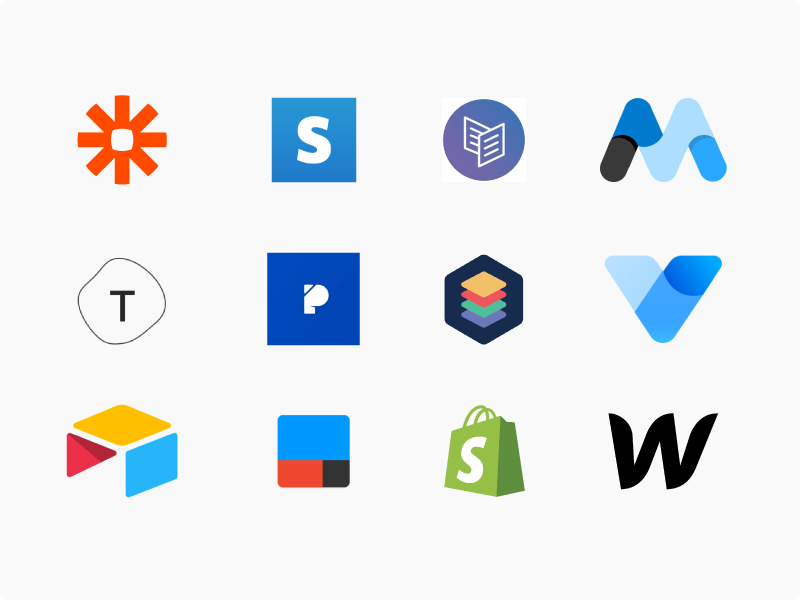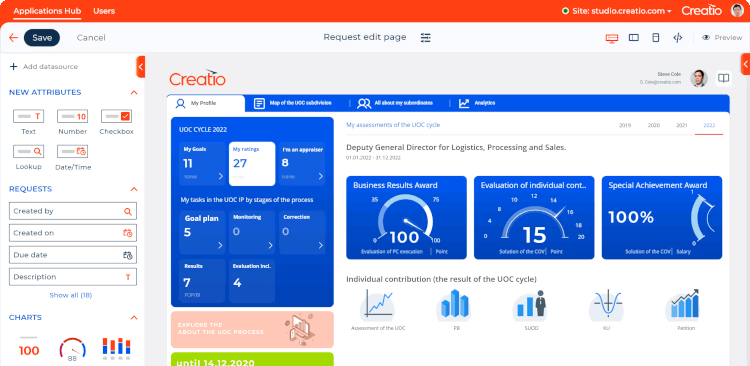No-Code Open Platform Database Creation: Streamline Facility Growth Jobs
No-Code Open Platform Database Creation: Streamline Facility Growth Jobs
Blog Article
Discover Just How Scalable Data Sources Can Be Made Use Of Without Coding to Improve Your Service Workflow
In today's busy service environment, the capability to handle and analyze information efficiently is paramount. Scalable databases, especially when coupled with no-code remedies, offer a transformative strategy that equips non-technical customers to enhance procedures. By using devices that require no coding know-how, companies can boost their operational abilities while lessening dependancy on IT sources. The genuine question lies in comprehending just how these remedies can be customized to certain organization requirements and what potential obstacles might occur in their application. Exploring these aspects can illuminate the path to functional quality.
Comprehending Scalable Data Sources
Scalable data sources are vital for modern business operations, permitting organizations to efficiently take care of increasing volumes of data without compromising performance. These databases are created to adapt and grow to the altering demands of a business, ensuring that they can manage bigger datasets and even more complex questions as organizational requirements evolve.
Comprehending scalable data sources includes identifying their 2 key kinds: vertical scaling and horizontal scaling. Upright scaling, or "scaling up," entails including more power (CPU, RAM) to an existing server to improve performance. On the other hand, straight scaling, or "scaling out," requires adding much more web servers to distribute the tons, which typically causes higher adaptability and fault tolerance.
Another vital facet is the architecture of scalable data sources, which can be either non-relational or relational. Relational data sources, such as MySQL and PostgreSQL, are structured and utilize SQL for inquiries, while non-relational data sources, like MongoDB and Cassandra, provide more flexibility with disorganized data.
Ultimately, comprehending scalable databases is vital for organizations intending to utilize data as a critical possession, allowing them to remain competitive in a progressively data-driven atmosphere.

Advantages of No-Code Solutions
Unlocking the capacity of no-code solutions equips organizations to enhance operations and boost productivity without the need for comprehensive programs understanding. These platforms permit non-technical individuals to develop, customize, and take care of data sources effortlessly, therefore equalizing accessibility to innovation throughout groups.
Among the primary benefits of no-code solutions is their speed of execution. Companies can rapidly release applications and automate procedures, considerably minimizing the moment invested in growth cycles. This dexterity enables organizations to react without delay to market adjustments and client demands, promoting a competitive side.
Furthermore, no-code systems reduce reliance on IT divisions for daily tasks, enabling technological groups to concentrate on more intricate tasks that call for specialized skills. This change not only enhances resource allowance however also advertises technology within the company.
Cost-effectiveness is another advantage, as no-code options can lower development and upkeep costs. By decreasing the need for coding know-how, firms can harness the capabilities of their existing labor force without the overhead of working with extra personnel.
Popular No-Code Data Source Tools
The surge of no-code services has led to the development of different database tools that provide to organizations seeking efficiency and ease of access. These devices encourage customers with limited technical expertise to produce, handle, and manipulate data sources flawlessly.

Caspio sticks out for its capacity to construct web applications with no coding. It permits companies to develop robust databases and release applications promptly, dealing with various industry demands. In a similar way, Propensity uses user-friendly user interfaces and powerful information administration abilities, making it possible for companies to develop custom-made applications customized to go to this site their workflows.

Usage Situations in Company Procedures
Just how can services leverage database devices to boost their procedures? Scalable databases supply organizations with powerful capabilities to take care of and analyze information without the requirement for substantial coding expertise. These tools can streamline numerous business procedures, inevitably leading to enhanced performance and performance.
One popular use case is client connection monitoring (CRM) Businesses can utilize scalable data sources to track consumer communications, choices, and comments, enabling personalized communication and better solution. By systematizing this details, teams can work together a lot more efficiently and respond to client requirements in real-time.
Another significant application is inventory administration. Business can employ no-code data source devices to keep track of stock levels, track deliveries, and forecast demand. This guarantees optimum supply levels, minimizes waste, and lessens stockouts.
Additionally, task monitoring can take advantage of scalable data sources by permitting groups to handle tasks, due dates, and resources in an unified system. With real-time updates and information visualization, project supervisors can make informed choices.
Getting Going With Implementation
Carrying out scalable data sources in company procedures calls for a structured approach to make certain successful integration and use. The initial step is to perform a comprehensive demands evaluation, determining details business requirements, data kinds, and expected development patterns. This fundamental understanding will assist the selection of the suitable data source remedy.
Following, select an user-friendly, no-code database platform that straightens with your functional goals. no-code. Several modern solutions offer her latest blog instinctive interfaces, permitting non-technical customers to handle information effectively. After picking a platform, develop a clear data design that outlines exactly how data will certainly be arranged, accessed, and maintained
Training is vital; make certain that staff member are furnished with the required abilities to use the data source. Take into consideration offering workshops or tutorials to familiarize personnel with the system's functionalities.
Conclusion
In final thought, the integration of scalable data sources via no-code options provides substantial advantages for service procedures. Inevitably, leveraging these technologies can lead to boosted productivity and operational efficiency, positioning businesses for sustained growth in an affordable landscape.
One popular no-code data source device is Airtable, which integrates the functionality of a spreadsheet More Info with the power of a database.Exactly how can companies leverage database devices to enhance their procedures? Companies can use scalable databases to track consumer interactions, preferences, and feedback, enabling customized interaction and better solution.Carrying out scalable databases in company procedures requires a structured strategy to guarantee successful integration and application.In verdict, the integration of scalable databases via no-code solutions presents significant advantages for service operations.
Report this page